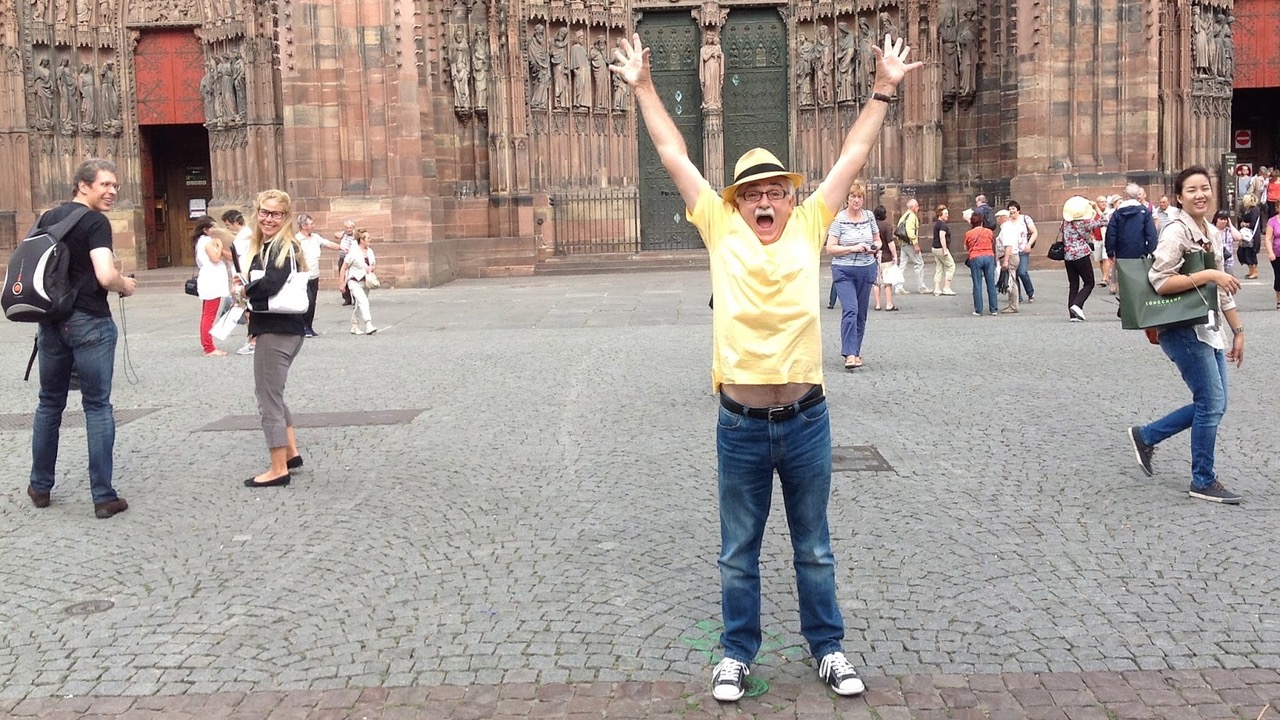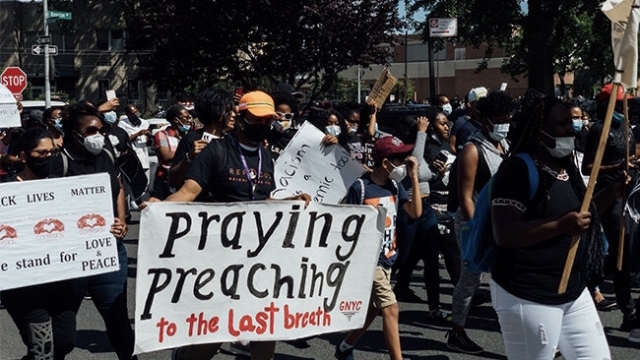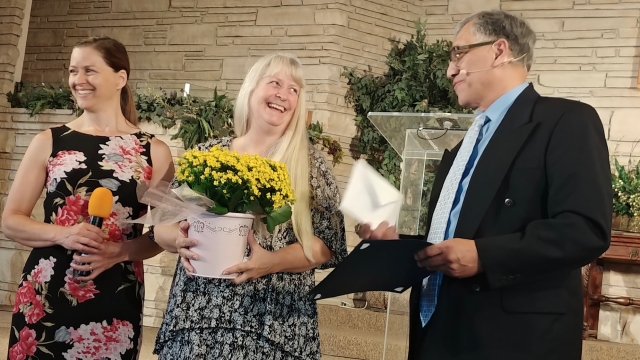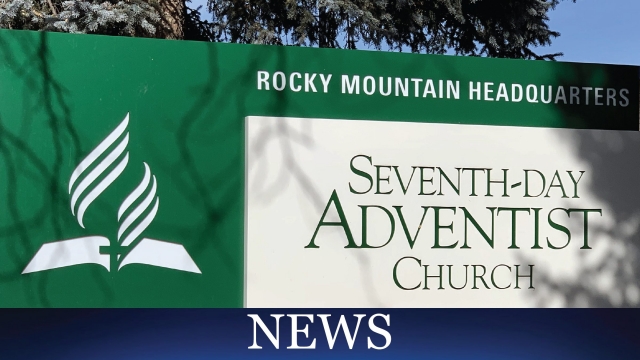By Rajmund Dabrowski … Time flies and detailed memory fades.* It was on June 21, 2004 when a procedure at the Holy Cross Hospital put a stop to a developing life challenge with prostate cancer. This exact date was scribbled on a receipt copy that I put into a valuables envelope before being wheeled out and delivered into the hands of two physicians who administered the implantation of small radio-active seeds around the prostate, known as brachytherapy.
Until recently, I didn’t consider writing about my experience. It was my experience, and a private one at that. Who would want to read about it? A little nudge from a friend going through a very serious trauma in her life, pushed me to share my story.
Dianna is a friend from our university days in 1970-71. She made me do it! So, I brought out a my file from 2003-4 with dates and facts on the serious life challenge I once traversed. She continues to receive my digital hugs and love.
What follows is a story of a human who does not give up on life, a story of being surrounded by people who care, who love, and who know what to do.
Th early Monday morning of June 21, 2004 became quite memorable for years. Today, I recall a few details of that morning nor of the procedure and how I was primed for it by two amazing doctors, Jonathan White, urologist, and Frank Sullivan, oncologist. The experience made me aware then of a valuable lesson that continues to this day, concerning the fragility of life, and the choices expressed in the famed Shakesperanean phrase, To be, or not to be…
The whole ordeal with my cancer situation was laced with moments of bewilderment, awe, and joy. Most of the joy was expressed in my own thoughts and in conversations I had with God and my loved-ones. There were exchanges of what to do, how to arrange the immediacy of days to come, and basically making a change in my lifestyle, creating a slower pace of life.
It all started with chest pain in mid-December 2003. I ended up on a hospital bed at the Washington Adventist Hospital (WAH). Having a few days to undergo tests and rest, the conclusion was that unless I slowed down in my daily pursuits, I might end up with consequential grief and tears on the faces of family and friends.
The specific trigger moment that precipitated a hick-up on an EKG read-out became a reminder from a few decades back that I had practiced how to do it my way, testing my authenticity and vulnerability, being at ease with my own life decisions, exercising courage, pushing the borders in life, rejecting conformity, and daring to be who I am. Not easy to do it, believe me. It is stressful to face being told what to do and live a life according to someone else.
In short, there was a meeting at work, someone in a high position pointed a finger at me, shook it, and said: “Ray, you shall do THAT!” I knew that I would not do what I was forcefully being fed, satisfying a decision someone else was making for me. I could not do it, knowing that participation in a non-professional corporate charade was against my better judgment. Stress boiled up to its pinnacle in my body. It allowed me, for a brief enduring moment, to be polite and mum, until the meeting ended. I picked up my toys from the office and went home.
The next morning, my chest communicated a message: Ray, get yourself checked out. A couple of hours later, I drove myself to the hospital.
The heart-event was woven with the wise and patient words of Dr. Radhey S. Murarka, a consultant cardiologist at WAH. He simply said, “You can go home now. My advice? Slow down or stress will kill you. Your heart is fine now, but I recommend a review of your lifestyle. It’s not worth fighting someone’s battles. May your own imagination pave the alley of your life’s journey. And rest a little.”
He probably said more, but that’s all I remember today. Returning home, I was wondering, what does he know about me, my work, my lifestyle, apart from what I shared with him, but with rather skimpy details?
A few weeks later, in mid-January 2004, I found myself having a general health check-up at Loma Linda University’s Center for Health Promotion. Tests revealed a satisfactory wellness score. Two or three days later, the phone rang one afternoon. It was the consulting physician from LLU, Dr. David Z. Hall. He reported on the PSA score, and suggested that we double check the result locally. “What I see suggests that you have prostate cancer,” I recall him saying. He recommended that I see a urologist locally and have another PSA test done.
What? Such was the first thought which raced though my head.
He was right. The LLU lab test revealed a 9.4 PSA reading. The LabCorp in Maryland showed a 7.3. A visit with Dr. White, subsequent biopsies (showing a very significant spread of cancer), a half a dozen tests (x-rays, CT scans, MRI scans, etc) confirmed the seriousness of my situation, and called for a review of options on where to go.
In front of me I had the following options: do nothing (this is not what crossed my mind), surgery, chemotherapy, proton treatment at LLU, radiation (to start with at Maryland Regional Cancer Center), or the brachytherapy.
My visit with Dr. White and Dr. Sullivan three months before, primed me for what was to happen on June 21. The five-week radiation treatment at Maryland Regional Cancer Center, before the Holy Cross Hospital surgery left me somewhat fatigued and closer to an understanding of what the Millennials refer to as whatever.
Frankly, my initial thoughts did not register the news of having cancer as being at the edge of a cliff. I tried to fog the potential consequences of the situation with thoughts of … and this too shall pass. But rather quickly, together with Grazyna and Michal, as well as David Brillhart, my close friend, I began a rather serious review of what it was that needed to happen, what needed to be reformed, what changes were important to be ignited. It became obvious that there was no time to waste.
Soon after receiving the phone call from LLU, a memorable moment, one that etched itself in my memory was a visit with my boss at the General Conference. I shared with him my predicament. His answer was in a question he asked: What are you planning to do about this dangerous situation? How can I help?
My answer was reflective of the way I often approach problem solving. I will take care of it, I recall saying. He replied: Good. Take as much time as you need. Your office work will still be here. Your colleagues will fill in.
We prayed. My family and friends prayed. The greatest treasure in this experience was to be surrounded by loving, caring people. Grazyna became a relentless pusher of quality nutrition (always organic!), drinking lots of water, and engaging in regular exercise. She laughs, as she reminds me about slowing down and considering to unwinding my clock and speed!
Sharing my situation with a few friends helped. At first I was invited to consider what they did, what worked for them. Mitch Tyner, a former colleague shared with me literature on prostate. Reinder Bruinsma, also a colleague from the Netherlands wrote that “if caught in time, it appears that a very large percentage of those who have cancer fully recover.” Both Mitch and Reinder poured lots of hope into me. I will be forever grateful. Cancer survivors are a close-knit fraternity, I discovered. Later, I did the same – gave support to those who were going through such traumatic, serious health issues. Living in a post-treatment phase has its challenges, but they don’t compare with the news of having a cancer situation.
The assurance of one’s faith and a life of hope made me aware that my life is more than my temporary pursuits. The cancer experience made me more aware of the people around me, especially those who are in situations which beckon me to be responsive. And moreover, such an experience creates friendships you will never forget.
But these days, when we are witnessing a see-saw situation with COVID-19 pandemic, when direct relationships are put on hold, we can’t wait to embrace each other again and refer to ourselves as … pandemic survivors.
My take away from the whole experience is this–living in and with the embrace of God is intertwined with gratitude for living one day at a time, and to the fullest. There is nothing more satisfying than being a purveyor of hope.
June 21 will always be an anniversary of becoming a cancer survivor. Today, it’s sixteen years on.
To life and love!
—Rajmund Dabrowski is RMC communication director (pictured in Strasbourg, France)
*This memoir was initially written in 2017. Today, the story becomes an evergreen for my geography of time, worth recalling and repeating. Being a cancer survivor is both humbling and a story of victory, as well as a lesson to celebrate one’s God-given health.




